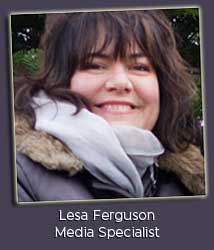
Lesa Ferguson originally wrote this post as a reflection for a church service in celebration of Martin Luther King Day.
Rebecca Brown, a favorite writing teacher of mine and a strong advocate for the celebration of Martin Luther King Day, was nonplussed when our school chose to schedule classes on this holiday. She decided to celebrate the day with a writing lesson inspired by Martin Luther King’s work.
She read to us the Author Note that Dr. King attached to the Letter from the Birmingham Jail. Upon publication, Dr. King explains in this Author Note the circumstances surrounding the writing of what would become a historical document. Here is is the contents of the Author Note:
This response to a published statement by eight fellow clergymen from Alabama (and here is where he lists them and their titles) was composed under somewhat constricting circumstance. Begun on the margins of the newspaper in which the statement appeared while I was in jail, the letter was continued on scraps of writing paper supplied by a friendly Negro trusty, and concluded on a pad my attorneys were eventually permitted to leave me.Dr. Martin Luther King, Jr.
After Rebecca Brown finished reading, the irony of a great writer without pen and paper, reduced to pencil stub, writing in the margins of a newspaper struck me fairly quickly. Here was a man who by his conviction, grace, spirit, eloquence, and action leapt from the margin beyond the printed page of a newspaper into the textbooks of history. From the margins into the collective—lesson learned.
But, Rebecca Brown took our lesson in a different direction. On this particular Martin Luther King Day, she taught us the development of the paragraph. The paragraph originated with medieval monks in the 13th century. The medieval monks were responsible for manufacturing books primarily bibles. Mostly they translated and illustrated scripture. Scribes wrote scripture in columns. Sentences flowed one after another without indentation or spacing—these columns were called graphs and looked like long blocks of text. In the margins the monks annotated, translated, and illustrated. They wrote around scripture or PARA which is Latin for beyond. So the monks wrote Para the graph and this is how the paragraph was developed. Originally the paragraph was a means to think beyond what was written, to elaborate on it, to illustrate it, to make scripture accessible and meaningful to its readers.
After she explained the origins of the paragraph, Rebecca Brown asked us to envision Dr. King in the Birmingham Jail, envision him writing on the margins of a newspaper, envision him as a medieval monk. I imagined the newspaper article containing the statement written by those 8 clergymen from Alabama and right next to that article; Dr. King began to write his response to that statement. He wrote on the page but his writing went beyond the statement made by those 8 clergymen from Alabama, beyond that day’s news, beyond the script.
More now than in the 1960s the news of the day reads like one long graph. Information from the internet, television, radio and print flows not even in complete sentences but in bits and bites without spacing without indentation, without annotation or thoughtful response. We need the notes written beyond the script. We need to hear from the margins, from those who write like medieval monks and like Dr. King. It is from the margin that we find meaning and voice.
Many of our children live in the margins. We can advocate for them. But before we act, we must look beyond the script of our daily lives, we must hear them calling to us from the margin, we must acknowledge their circumstances, and we must learn from them the best step to take. Ultimately, all children should be afforded safety, protection, home and family. But, on this day as we celebrate one of the most articulate, radical, meaning-filled voices ever to come from the margin, first we must listen.

Read More by Lesa Quale Ferguson:
- The Referral
- Vicarious Hair
- Birth Mother’s Day Celebration ’13: A Recap
- Adoption Posse Part 1
- Adoption Posse Part 2
- Waiting
- Waiting Part 2
- Tell Us Your Adoption Story
© Adoption STAR blog, 2013. Unauthorized use and/or duplication of this material without express and written permission from this blog’s author and/or owner is strictly prohibited. Excerpts and links may be used, provided that full and clear credit is given to the Adoption STAR Blog with appropriate and specific direction to the original content.

